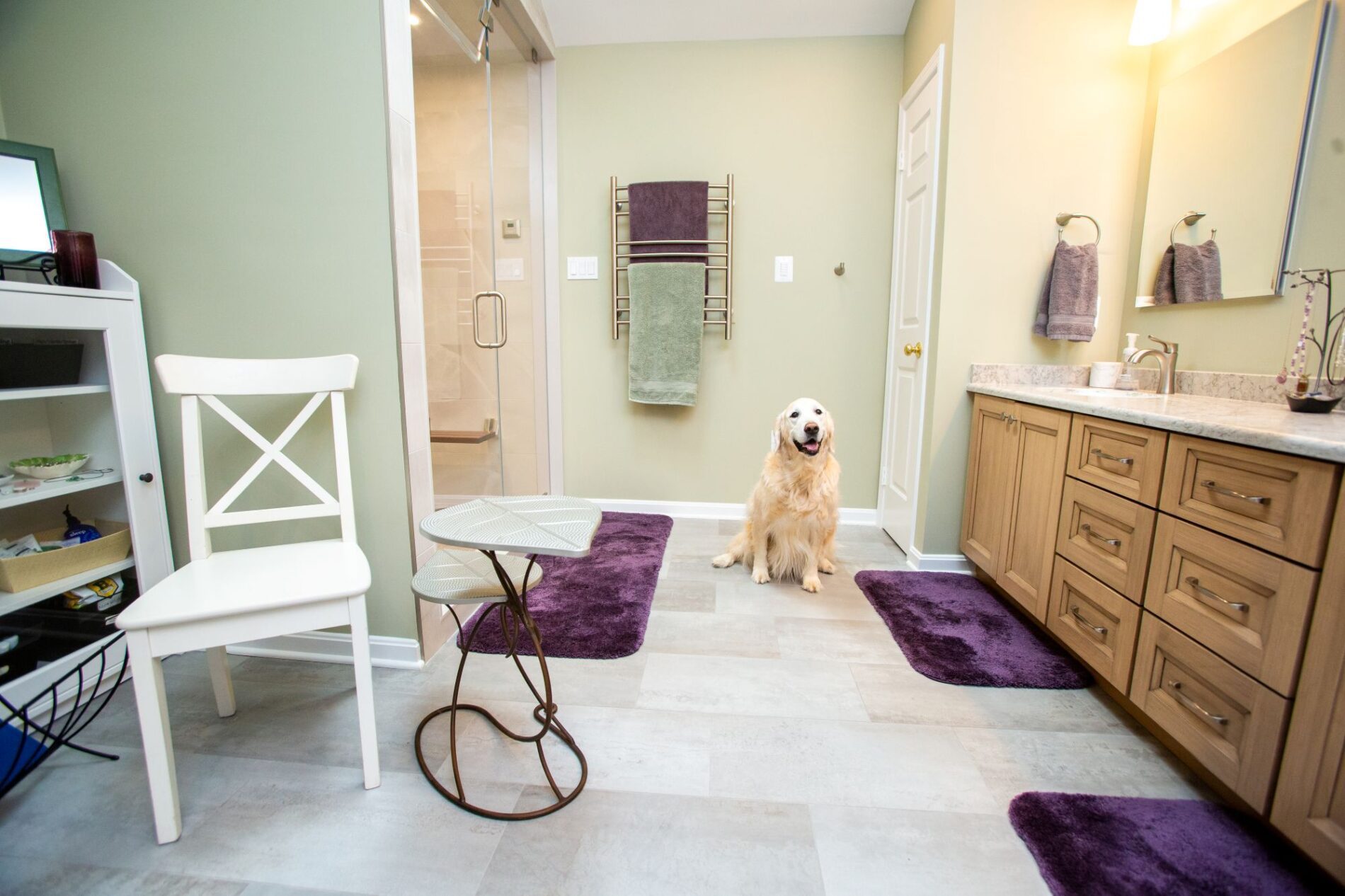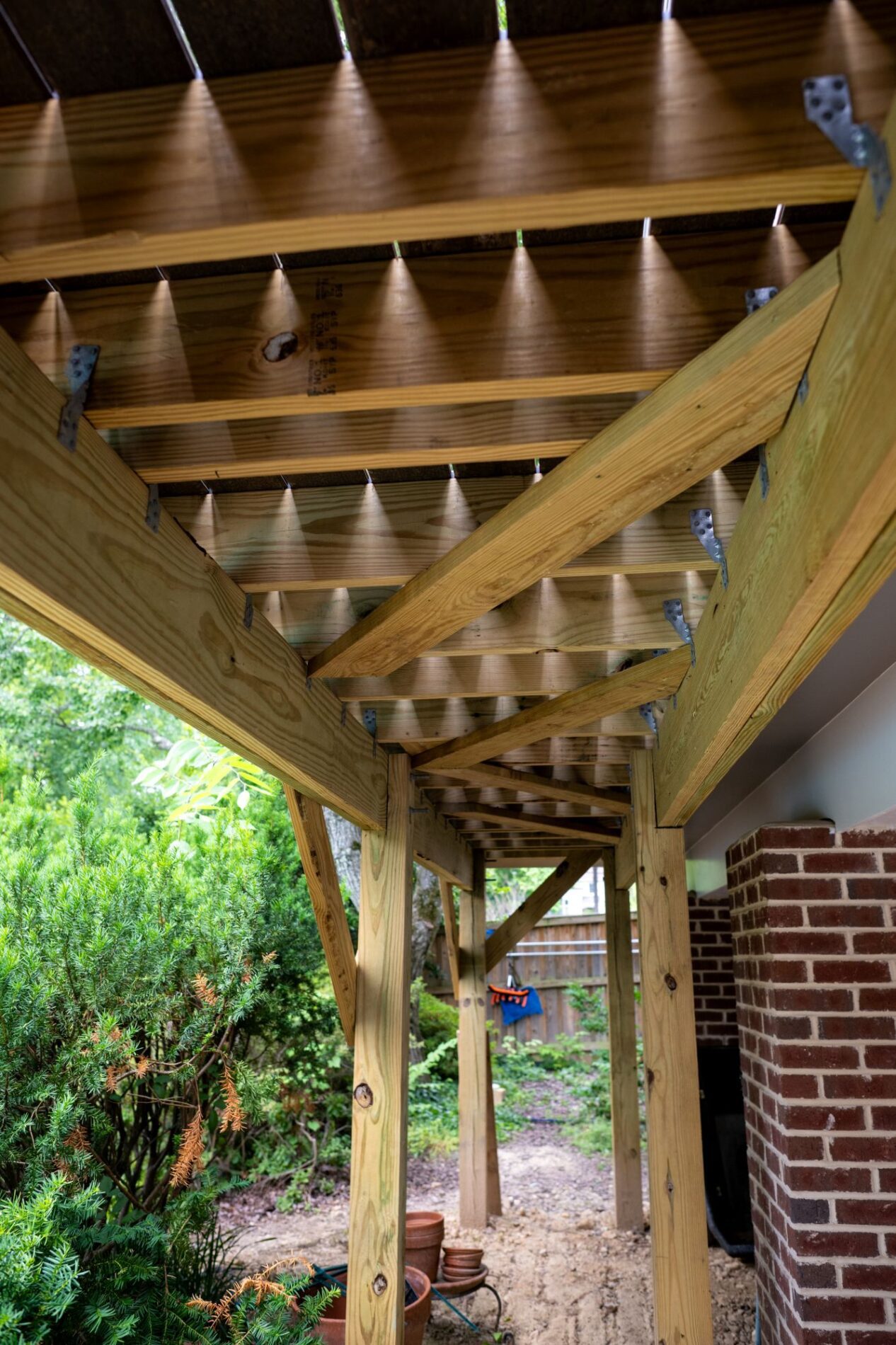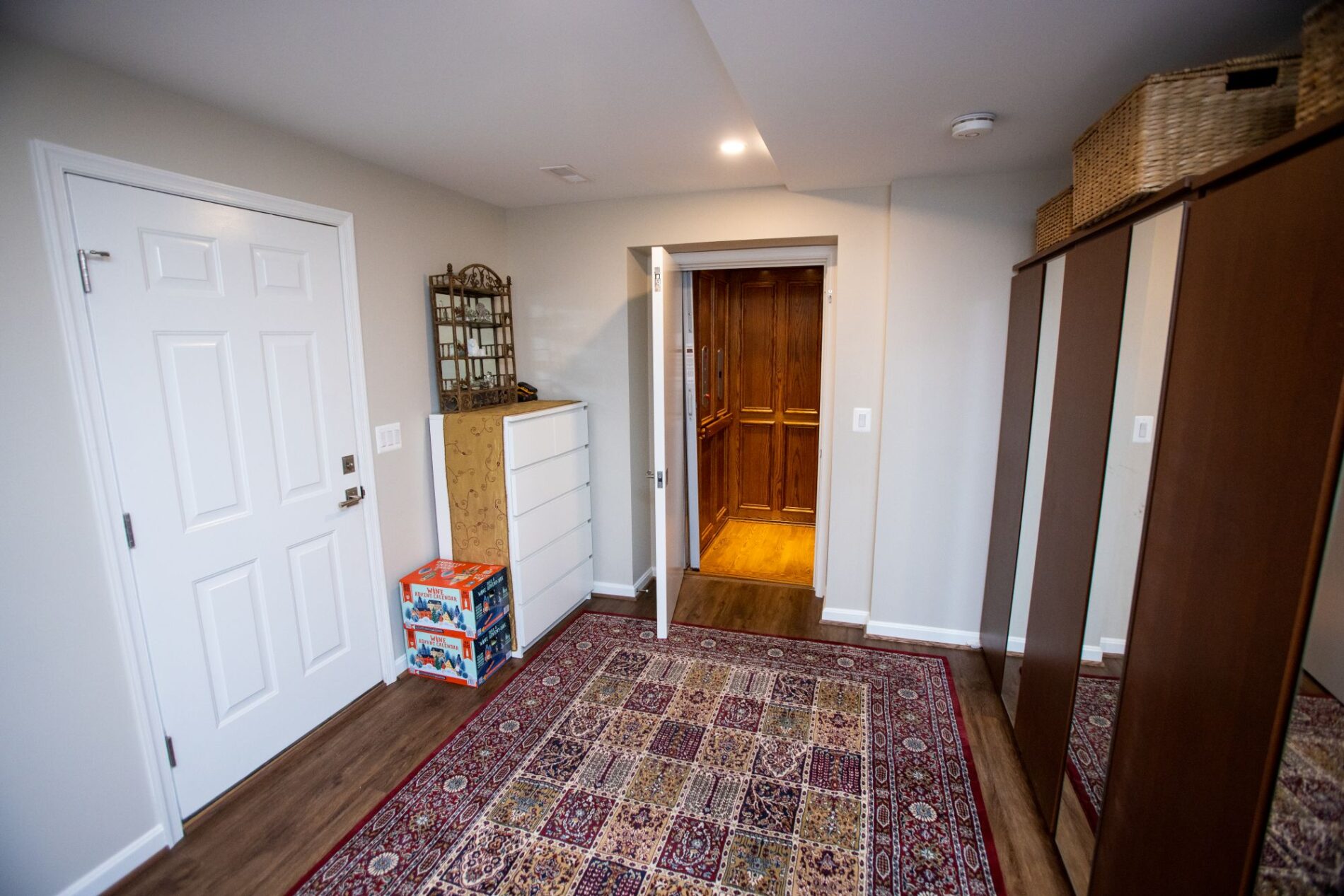When homeowners start planning a major renovation, the question of remodeling vs building almost always comes up: “Would it be easier just to start over and build new?”
On paper, remodeling appears to be a smaller project. But in reality, it often involves greater complexity, coordination, and craftsmanship than building a new home from scratch.
That’s because remodeling isn’t just about constructing something new — it’s about working within the bones of what already exists. Every wall opened, every wire rerouted, every hidden detail carries a history that influences what comes next.
Here’s why remodeling demands deeper planning, greater expertise, and a level of precision that only experienced remodeling companies can provide.
Remodeling: The Hidden World Beneath Your Walls
Every remodeling project begins with a sense of discovery. Unlike new home construction, which starts on a clean site, remodeling involves stepping into a home with a rich history behind its walls.
Once demolition begins, those hidden stories emerge: a load-bearing wall that doesn’t align between floors, aging plumbing that’s out of code, or foundation blocks that have shifted over time.
Each surprise adds new layers of decision-making — and for remodelers, it’s part of the job. An experienced remodeler knows how to plan for contingencies and build flexibility into the schedule and budget.
At Northwood Construction, we place a strong emphasis on the discovery phase, which happens long before construction begins.
During our estimating and design process, we conduct a thorough site assessment to identify potential issues early, including outdated electrical systems, load path alignment, and hidden moisture concerns.
While no remodel can predict every condition behind the walls, this proactive approach helps minimize surprises, create more accurate budgets, and keep projects running smoothly once work starts.
💡Pro insight: Experienced remodelers know that discovery isn’t a setback. It’s the moment they get to make the home safer, stronger, more functional than it’s ever been and expose potential financial surprises.

A Real Example: Reston, VA Bathroom Remodel
One of our bathroom remodeling projects in Reston, Virginia, perfectly illustrates this.
A homeowner contacted us after discovering a shower leak that had seeped through the ceiling into their laundry room. Unfortunately, they had already undergone a remodel with another contractor, and that contractor’s mistakes had caused the damage. By the time we arrived, the clients were frustrated, cautious, and understandably anxious about going through the remodeling process again.
Our first task wasn’t just fixing the leak — it was rebuilding their trust.
Once we opened the walls, we confirmed the extent of the moisture damage. We stripped everything down to the studs, rebuilt the shower system properly, and installed a custom steam shower—a complex feature that requires careful structural and moisture management.
The ceiling was pitched to prevent condensation buildup, and a pivot vent above the glass door allowed steam to escape safely after each use.
When it was complete, the space was transformed from a problem area into a calm, spa-like retreat. But more importantly, the clients finally felt confident that their home was in capable hands.
That project reinforced a core truth of remodeling: once you open a wall, you’re not just rebuilding a room — you’re restoring trust.
The Legacy of Previous Remodeling Work
Homes tell their stories layer by layer. And sometimes, those stories include “creative” repairs or outdated construction from decades past.
Remodelers often uncover unpermitted additions, improper framing, or electrical shortcuts left behind by previous contractors. Before any new work can begin, those hidden issues must be corrected to meet modern code — a step that adds both complexity and responsibility.
Unlike a new build, where everything is engineered and inspected from the start, remodeling means working within old frameworks and upgrading them safely. It’s an intricate balance of respecting the home’s original craftsmanship and adapting to modern standards.

Modern Systems Meet Old Frameworks
Another layer of complexity comes from integrating modern mechanical, electrical, and plumbing systems into homes that weren’t designed for them.
It’s not as simple as running new wires or adding new fixtures. Remodelers often have to:
- Relocate gas lines or electrical meters to comply with current safety codes,
- Route HVAC ducts through limited structural cavities, or
- Retrofit insulation and ventilation systems into spaces that were never designed to hold them.
Every utility change requires coordination with multiple trades and sometimes even local utility companies — each operating on its own schedule.
In Northern Virginia, where many homes were built between the 1950s and 1980s, this challenge is routine. The structures were built for a different era of building standards, and bringing them into the present requires experience and creative problem-solving.
💡 Expert Tip: Always work with a remodeler who has strong relationships with local inspectors and utility providers. It keeps projects on track when unforeseen reconfigurations arise.
Code Compliance and the Dual Responsibility
Remodeling carries a unique dual responsibility: remodelers must ensure that the new work complies with current building codes and that the existing structure doesn’t violate those same standards.
That can mean more inspections, more permits, and more communication with county building departments than a new build might require.
And in Northern Virginia, where each county has its own permitting process, even minor scope changes can trigger additional review cycles.
While this can add time, it ultimately protects homeowners. A remodel completed to the current code improves the home’s safety, efficiency, and resale value.
Codes aren’t obstacles; they’re safeguards for your family’s safety and your home’s future.
Working Within an Occupied Space
New construction crews have the freedom of an open lot. Remodelers, by contrast, work within a living environment — often with homeowners (and pets) still occupying the space and neighborhood children itching to see the new big hole or digging equipment.
This requires a high level of planning, effective communication, and mutual respect.
Work areas must be sealed off to contain dust. Power and water disruptions must be scheduled carefully. Noise must be minimized where possible.
That’s why we don’t just plan for the build but for the daily homeowner experience and safety. We want to make sure the process is as comfortable and predictable as possible.
The Unpredictability Factor
Even with the most detailed plans and careful walkthroughs, remodeling always holds a few surprises. Once walls are opened, remodelers might uncover issues that were previously invisible — such as a hidden vent, an outdated plumbing line, electrical wires held together with duct tape, or a structural beam that’s not where the plans indicated it would be.
That’s why remodeling requires flexibility and creative problem-solving. Unlike new-home construction, which moves in a predictable, step-by-step sequence, remodeling often calls for on-the-spot adjustments that protect both the integrity and the vision of the finished space.
But unpredictability doesn’t mean chaos. At Northwood Construction, we see it as part of the craft. Each challenge gives us an opportunity to apply our experience, adapt the design, and keep the project moving forward with care.
We also know these moments can feel personal for homeowners. After all, it’s your home—your memories behind those walls. Our goal is to make the process transparent, minimize surprises, and help you feel confident that your home is being handled with skill and respect from start to finish.
Why Northern Virginia Homes Pose Unique Remodeling Challenges
Remodeling in Northern Virginia isn’t the same as remodeling elsewhere. The homes here are often older, with architectural quirks, tight neighborhoods, and strict county permitting systems.
Common challenges include:
- Mixed construction methods (masonry and wood framing) in older neighborhoods.
- Limited lot space that prevents exterior expansion.
- Frequent updates to energy and accessibility codes.
- High expectations for quality and craftsmanship.
That’s why local expertise matters. A remodeler who understands both the technical demands and regional regulations can foresee obstacles and keep projects running smoothly.

Remodeling vs. Building New: The Core Difference
So, what truly makes remodeling more complex than building new? It comes down to three things:
| Factor | Remodeling | New Construction |
| Starting Point | Existing structure with unknown variables | Blank slate |
| Flexibility | Must adapt to conditions discovered mid-project | Highly predictable workflow |
| Expertise Required | High – structural, mechanical, and design integration | Moderate – consistent, planned execution |
Remodeling is the art of working within limitations — of creating something new without erasing what’s already there and adapting to the unseen. It requires not just construction skills but diagnostic thinking, design sensitivity, and client empathy.
If you’re weighing the option of remodeling versus building a new home in Northern Virginia, start with a conversation. Our team at Northwood Construction specializes in complex remodeling projects that strike a balance between aesthetics, safety, and long-term functionality. We’ll help you uncover what’s possible — and plan for what’s hidden — so your remodel runs smoothly from day one.
